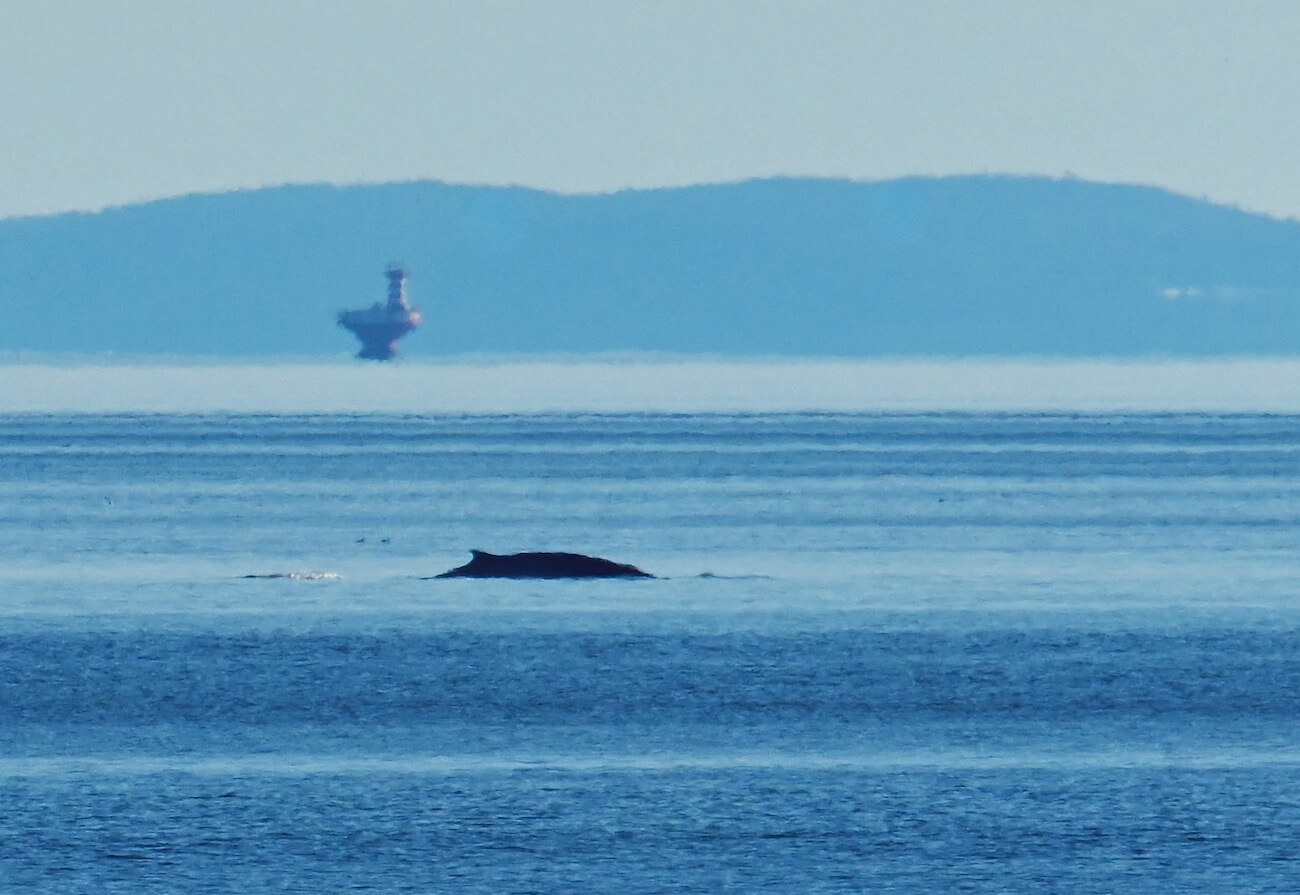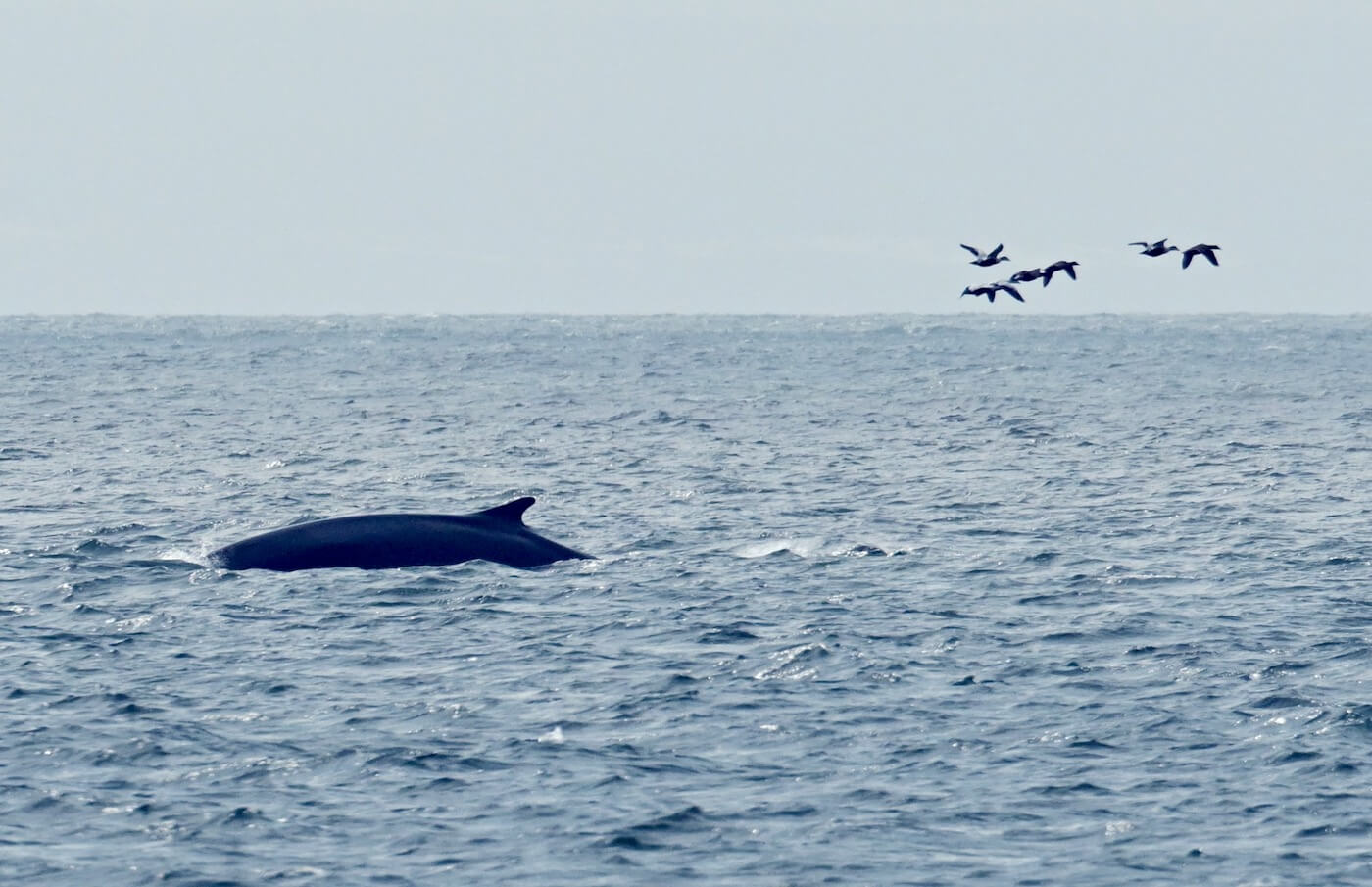A whale-watching boat in the Saguenay-St. Lawrence Marine Park encounters the fin whale Caïman and her young on August 16. At one point, the animals draw closer to one another, swimming belly to belly. The naturalist on board spots a white substance. Might this female be nursing her calf?
Perhaps. Like any mammal, whales nurse their young before the latter begin eating solids. Females have two nipples hidden in two small slits on each side of the genital slit. Stimulated by pressure from the calf on the nipple, they eject milk into its mouth. Just like reproduction, this behaviour is extremely difficult to observe in a natural environment. The advent of drones allows researchers to better document these little-studied behaviours.
In fin whales, mating takes place in temperate waters between December and January. Calves are born about a year later, sometime between November and January. Nursing lasts 6 to 7 months. The fact that this calf is still being nursed in late August indicates that it was probably born toward the end of winter.
Nursing in toothed whales lasts longer than in baleen whales: 1-2 years for the former versus 6-9 months for the latter. In the St. Lawrence, it is possible to happen upon young belugas and harbour porpoises in the process of breastfeeding. Newborn belugas are born in the Estuary between June and September and nursing lasts 20 to 30 months. Harbour porpoises give birth in the spring and early summer, at a time when there are number of adults in the St. Lawrence. This week, naturalists from the Marine Environment Discovery Centre (CDMM) in Les Escoumins suspect that they observed nursing in this small cetacean: one individual remains motionless at the water surface and then, a few minutes later, a second smaller animal appears at its side. In Sept-Îles, the Sept-Îles Education and Research Centre (CERSI) tallies nearly one hundred porpoises during its outings, but very few mother-calf pairs.
Surprises all over the St. Lawrence
On August 20, at the mouth of the Saguenay, two research assistants are dumbfounded to see a narwhal. Thanks to their photos, they are able to confirm that it is the same young narwhal discovered last summer in Trois-Pistoles.
Caïman, Trou, Bp942 (Piton)… These are the fin whales recognized this week in the Estuary. Caïman occupies a special place in the history of the Marine Park, as she is the fin whale that has been observed the most often. Ever since she was first sighted in 1986, she has been seen almost every year and on more than one occasion with a calf. Three blue whales are also noted in this sector, including the female Chameau, and gray seals are observed amongst the flocks of gulls and kittiwakes near Prince Shoal Lighthouse.
In Chaleur Bay in the Gaspésie region, the sighting of a basking shark raises many questions. What is it doing there? This shark is widespread throughout the world, and is observed regularly in the St. Lawrence River, including in Chaleur Bay. Even though it is huge – measuring 12 m long – it is harmless to humans. It feeds on zooplankton and small fish. It is identifiable by its high dorsal fin and its gaping mouth when it is feeding. The Mingan Island Cetacean Study (MICS) team also encounters five basking sharks in the waters off the Mingan Archipelago. The calm conditions and flat waters of the day make it possible to spot the fins of these fish from afar. Over the course of the week, the team also noted the presence of roughly 15 humpback whales, an equal number of fin whales, one North Atlantic right whale as well as numerous minke whales throughout the area.
Off of Gaspé and Percé, groups of white-sided dolphins join large rorquals to feed on schools of fish. Their tricoloured flanks are clearly visible when they leap out of the water. They swim energetically and in tight formation. The MICS team, which is also present in the Gaspé region to pursue its research efforts in the area, tallies twenty fin whales, two humpbacks, five right whales and twenty or so minke whales between Gaspé Bay and L’Anse-à-Valleau. A crew from Fisheries and Oceans Canada estimates that between 7 and 10 right whales are present 19 nautical miles north of Cap Gaspé.





